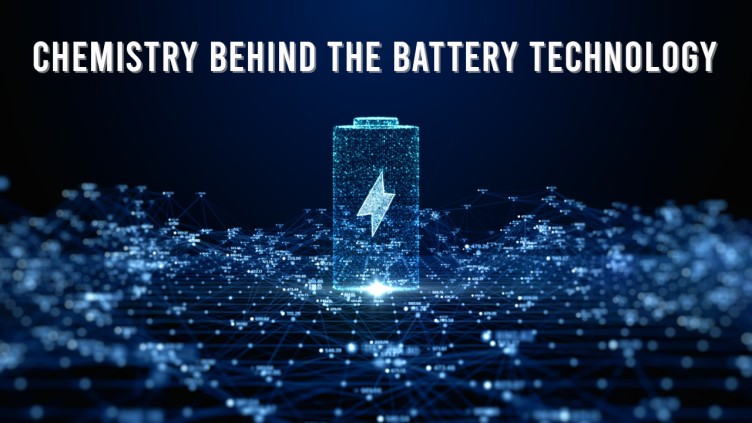Batteries have been an important source of energy for a long time. They have powered our everyday appliances for optimum use but do we know the exact chemistry behind the battery technology? This article is circling around the mechanism and fundamentals of battery technology.
Charge mechanism of batteries
Batteries typically contain a chemical reaction between two electrodes, an anode and a cathode, and an electrolyte. When a battery is connected to an external circuit, the chemical reaction causes electrons to flow from the anode to the cathode, creating an electric current. This current can be used to power external devices. The chemical reaction also causes ions to move from the electrolyte to the electrodes, which creates an electric charge. As the battery discharges, the ions move back to the electrolyte and the electric charge is reduced. This process is known as charge/discharge.

Two types of battery charging
1. Constant Current Charging: This type of battery charging method involves charging the battery at a constant current rate, usually until it reaches a predetermined voltage limit.
2. Constant Voltage Charging: This type of battery charging involves charging the battery at a constant voltage, usually until it reaches a predetermined current limit. This type of charging is typically used for lead-acid batteries.
Types of battery charges
1. Trickle Charge: A trickle charge is a slow, continuous charge used to maintain the charge on a battery.
2. Fast Charge: Fast charging is a method of charging a battery at a higher rate than normal, allowing it to charge quickly.
3. Equalization Charge: An equalization charge is a method of charging a battery that involves supplying an overcharge for a period of time to help equalize the charge within each cell of the battery.
4. Boost Charge: A boost charge is a type of charge used to rapidly increase a battery’s voltage. It is typically used for short periods of time to bring a battery up to its full potential.
5. Float Charge: A floating charge is a type of charge used to maintain the charge on a battery. It is typically used to keep a battery charged over a long period of time.
6. Pulse Charge: A pulse charge is a type of charge that involves periodically supplying a battery with a burst of energy. It is typically used to restore the charge to a battery that has been depleted.
The charge capacity of the battery
The capacity of a battery depends on its size, chemistry, and design. The most common type of battery, the lead-acid battery, typically has a capacity of around 20-30 Ah (Amp-hours). Other types of batteries, such as Lithium-ion and NiMH, have much higher capacities, ranging from 2000-6000 mAh (milliamp-hours).

Recharge technology of batteries
Rechargeable batteries can be recharged using a variety of technologies, including:
1. Lead-acid batteries: Lead-acid batteries use a chemical reaction between lead and sulfuric acid to store and release electrical energy. They can be recharged by passing a current through them in the opposite direction of discharge.
2. Nickel-cadmium (NiCd) batteries: NiCd batteries use an electrochemical reaction between nickel and cadmium to store and release electrical energy. They can be recharged by passing a current through them in the opposite direction of discharge.
3. Nickel-metal hydride (NiMH) batteries: NiMH batteries use an electrochemical reaction between nickel and hydrogen to store and release electrical energy. They can be recharged by passing a current through them in the opposite direction of discharge.
4. Lithium-ion (Li-ion) batteries: Li-ion batteries use an electrochemical reaction between lithium ions and an electrolyte to store and release electrical energy. They can be recharged by passing a current through them in the opposite direction of discharge.
5. Lithium-polymer (LiPo) batteries: LiPo batteries use an electrochemical reaction between lithium and polymers to store and release electrical energy. They can be recharged by passing a current through them in the opposite direction of discharge.
Conclusion
This article concludes the different mechanisms of the battery like types of charges, battery technologies, and charge capacity.
About Semco – Semco University is an educational website that is catering to the needs of students and researchers. Offering information on Lithium-ion batteries. The resources and content are compiled from various sources including manufacturers, test labs, crowdsourcing, etc. Our motto is to provide a viable resource for companies, students, and enthusiasts interested in participating in the Li-ion Battery industry. Our initiative is to make people aware of the benefits, and opportunities of the revolutionary Lithium Batteries for multiple applications.
For More Updates Follow Us
WhatsApp – Facebook – Instagram – Twitter – LinkedIn – YouTube

